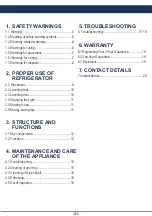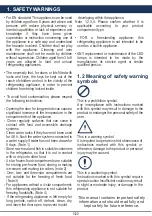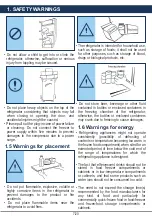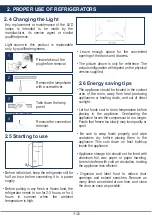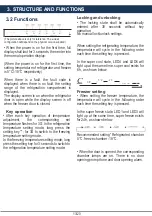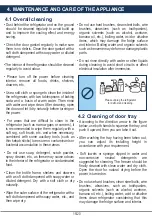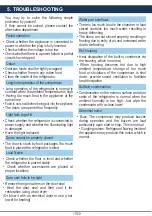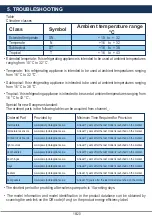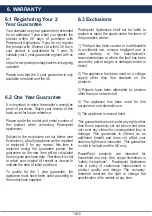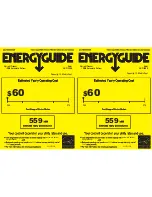
• Do not allow a child to get into or climb the
refrigerator; otherwise, suffocation or serious
injury from toppling may be casued.
• Do not place heavy objects on the top of the
refrigerator considering that objects may fall
when closing or opening the door, and
accidental injuries might be caused.
• Please pull out the plug-in case of power failure
or cleaning. Do not connect the freezer to
power supply within five minutes to prevent
damages to the compressor due to a power
surge.
• Do not put flammable, explosive, volatile or
highly corrosive items in the refrigerator to
prevent damages to the product or fire
accidents.
• Do not place flammable items near the
refrigerator to avoid fires.
• The refrigerator is intended for household use,
such as storage of foods; it shall not be used
for other purposes, such as storage of blood,
drugs or biological products, etc.
• Do not store beer, beverage or other fluid
contained in bottles or enclosed containers in
the freezing chamber of the refrigerator;
otherwise, the bottles or enclosed containers
may crack due to freezing to cause damages.
• Refrigerating appliances might not operate
consistently (possibility of defrosting of
contents or temperature becoming too warm in
the frozen food compartment) when sited for an
extended period of time below the cold end of
the range of temperatures for which the
refrigerating appliance is designed.
• The fact that effervescent drinks should not be
stored in food freezer compartments or
cabinets or in low-temperature compartments
or cabinets, and that some products such as
water ices should not be consumed too cold.
• The need to not exceed the storage time(s)
recommended by the food manufacturers for
any kind of food and particularly for
commercially quick-frozen food in food-freezer
and frozen-food storage compartments or
cabinets.
1. SAFETY WARNINGS
7/20
1.5 Warnings for placement
1.6 Warnings for energy



